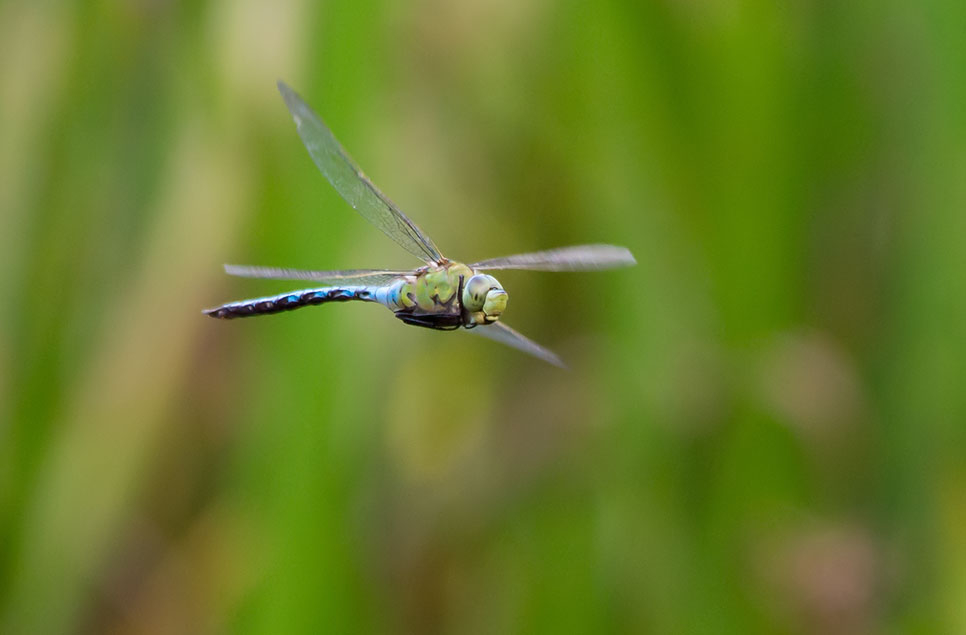Your window on wetland wildlife - June 2020
Welcome to another round up of all the action we’ve enjoyed seeing across WWT reserves, throughout the month of June

Hello and welcome to another round up of all the action we’ve enjoyed seeing across WWT reserves, throughout the month of June. This month we waved goodbye to spring and celebrated summer with the longest day of the year. We also began to re-open our centres so perhaps some of you have been able to see, with your own eyes, some of what is to follow!
It is the height of summer and prime time for insects on the wing, and our wetland sites are great places to see beautiful butterflies and dragonflies. Birds have also started to arrive back from their breeding grounds; the return migration has started!
Mid-summer is a beautiful time. With the longest daylight hours of the year, you have to be up early in order to catch the summer solstice sunrise!
The early migrators have already set off! Waders and ducks are being sighted across our wetlands, as they stopover on their way to their wintering grounds.
We are seeing many parading their breeding plumage and some more unexpected visitors than others, from ruff in their fantastic fluffy finery to a rather lost pale-bellied brent who should be breeding in Iceland at this time of year!
This male garganey was stunning in his breeding plumage. But now that the job of impressing the ladies with his fancy dress is done, it’s time to moult and grow anew. Once fully feathered, he’ll be heading to the warmth of central Africa to over-winter.
Green sandpipers are being seen passing through on their return journey from their breeding grounds in Scandinavia, to their wintering grounds in southern Europe and Africa (although a small number will winter in southern England). They’re one of the first waders to be seen passing through and most years you can make a pretty safe bet you’ll see one in mid-June!
The elegant greenshank breeds in the north of Scotland and in Scandinavia. This one is likely a failed breeder and so is now on its way back south, still in breeding finery.
Meanwhile our new young keep on getting bigger, others are still breeding, and new life is in full flux with youthful boundless energy.
Here is a glimpse of the goings-on down at South Lake, with avocet chicks growing up fast and wading out into the water, their protective parents keeping an eye. Further from view on the island itself some black-headed gull chicks have hatched.
As you can imagine there is a very real need for the chicks to stay well camouflaged otherwise they can often fall prey to predators like this Marsh harrier - a top predator of our wetlands. This female is likely to be providing for her own young family.
It’s noisy down at Washington now among the breeding common tern colony, which is full of nests, young fluffy chicks waddling around, and squawking mothers.
Castle Espie have been enjoying the lovely sight of a young family of common golden eye ducklings.
And at Martin Mere it’s exciting to see a Great Crested Grebe mother with young ducklings in tow.
It doesn’t always have to be about birds here at WWT. Here is a roe deer with her adorable young fawn cautiously keeping very close to its mother at Caerlaverock.
At this time of year it’s also bug-life that really comes into its own. In warmer weather, insects of the air do not sit around in the sun. They are busy flitting and zipping around water bodies, so we are lucky to get some good snapshots of these small, speedy creatures on the wing.
Firstly, at the beginning of the month we have this incredible photo of an Emperor dragonfly freshly emerged from its nymph form.
These black-tailed skimmer dragonflies were captured mating at Welney. They patrol the lagoons low to the water, which gives them their name.
At Steart Marshes we have also witnessed an abundance of Meadow browns which you might also have noticed in surrounding open grassland and along hedgerows near you!
And finally, here is the beautiful common spotted orchid, one of the sure signs that summer is finally here!
We hope you can join us in saying, ‘hare-ray’ for another reserves round-up!



